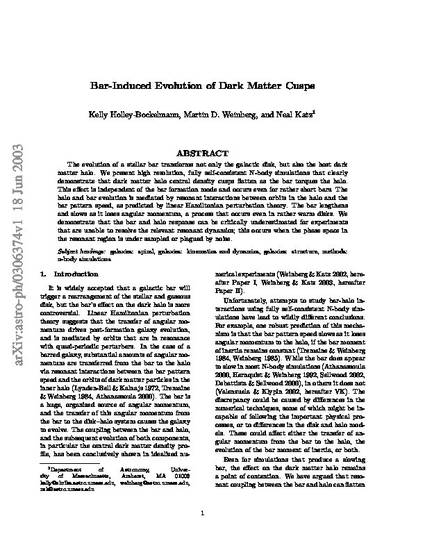
The evolution of a stellar bar transforms not only the galactic disc, but also the host dark matter halo. We present high-resolution, fully self-consistent N-body simulations that clearly demonstrate that dark matter halo central density cusps flatten as the bar torques the halo. This effect is independent of the bar formation mode and occurs even for rather short bars. The halo and bar evolution is mediated by resonant interactions between orbits in the halo and the bar pattern speed, as predicted by linear Hamiltonian perturbation theory. The bar lengthens and slows as it loses angular momentum, a process that occurs even in rather warm discs. We demonstrate that the bar and halo response can be critically underestimated for experiments that are unable to resolve the relevant resonant dynamics; this occurs when the phase space in the resonant region is undersampled or plagued by noise.
Available at: http://works.bepress.com/martin_weinberg/49/

This is a pre-published version which is collected from arXiv link. The published version is at http://onlinelibrary.wiley.com/doi/10.1111/j.1365-2966.2005.09501.x/abstract